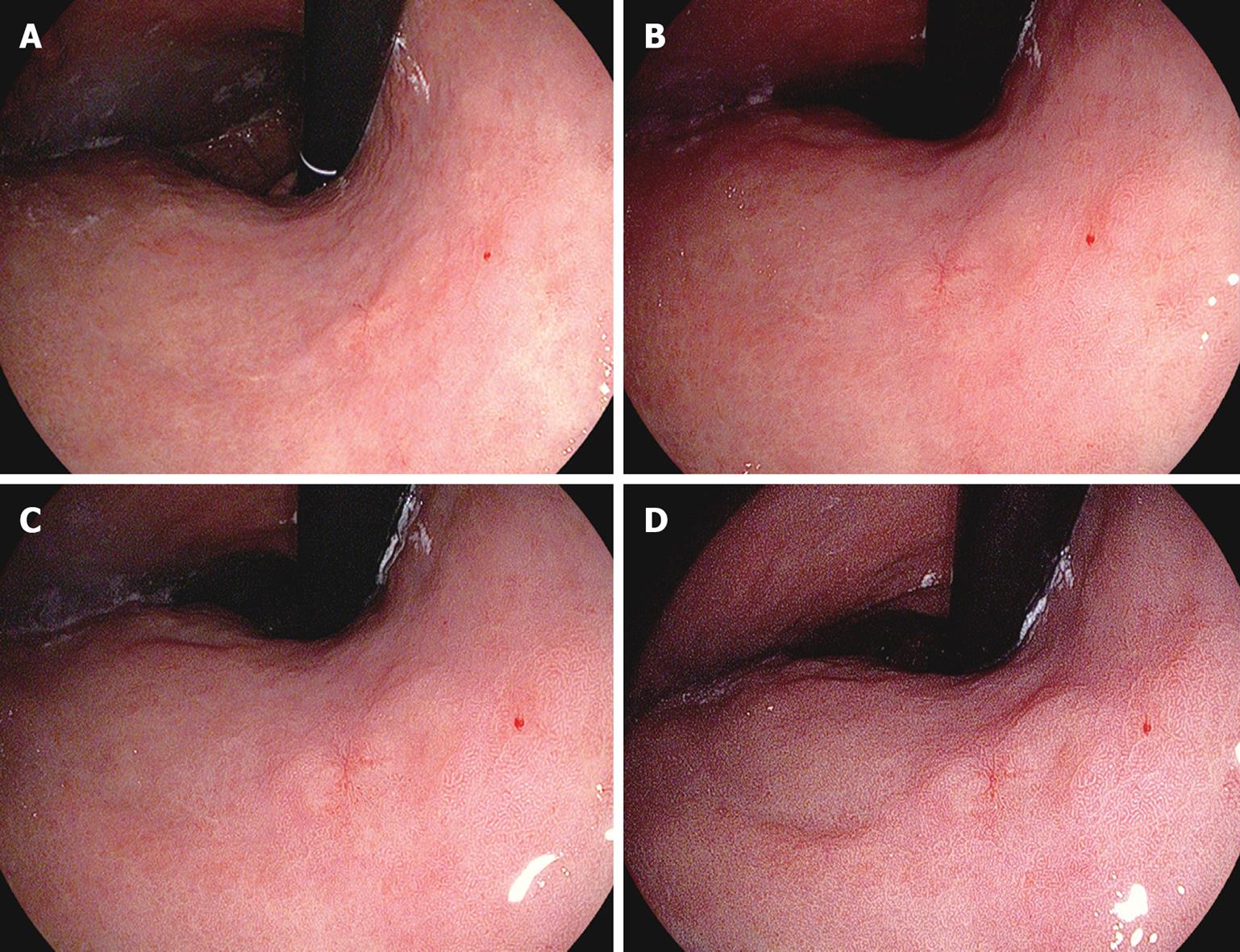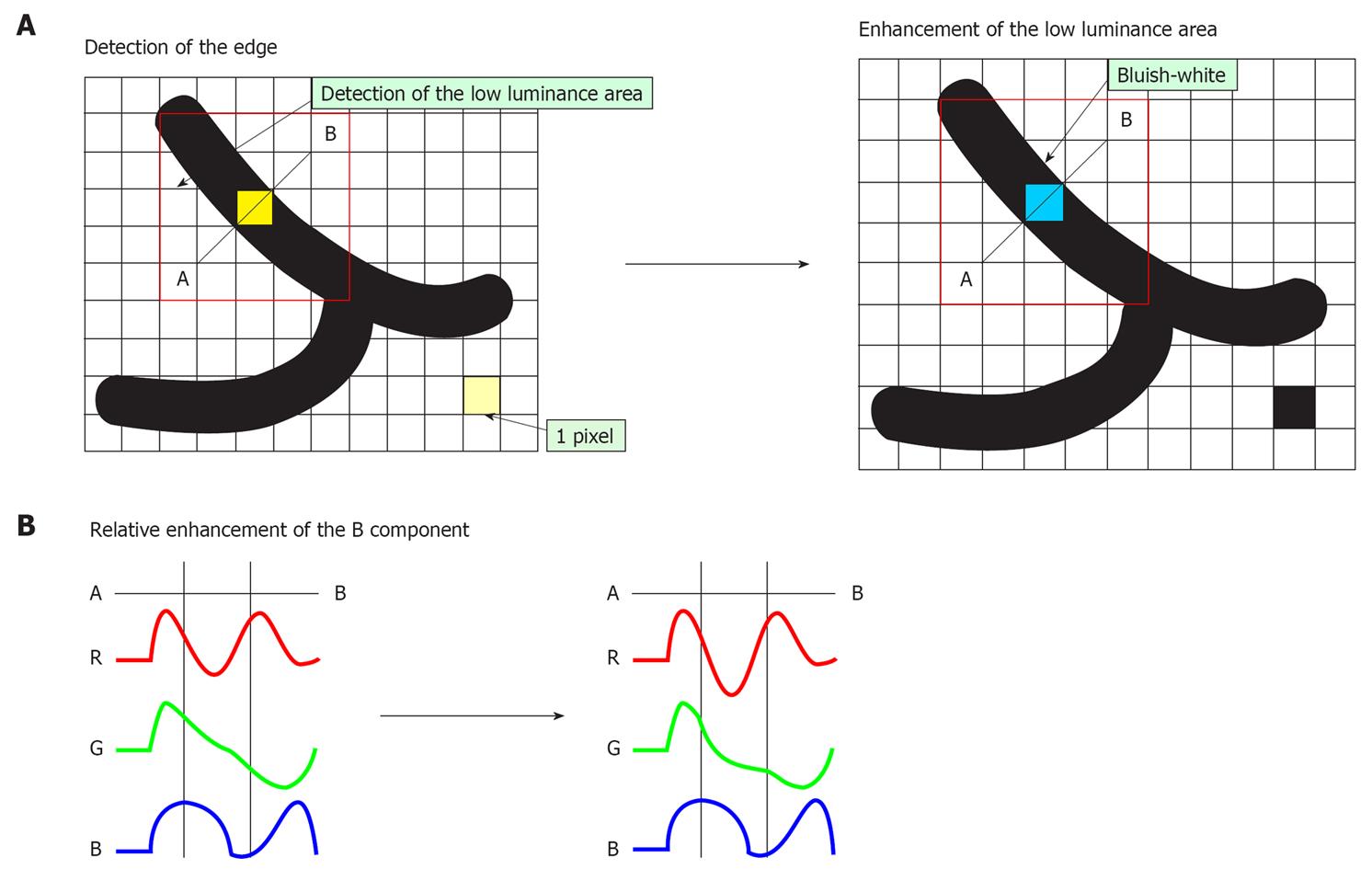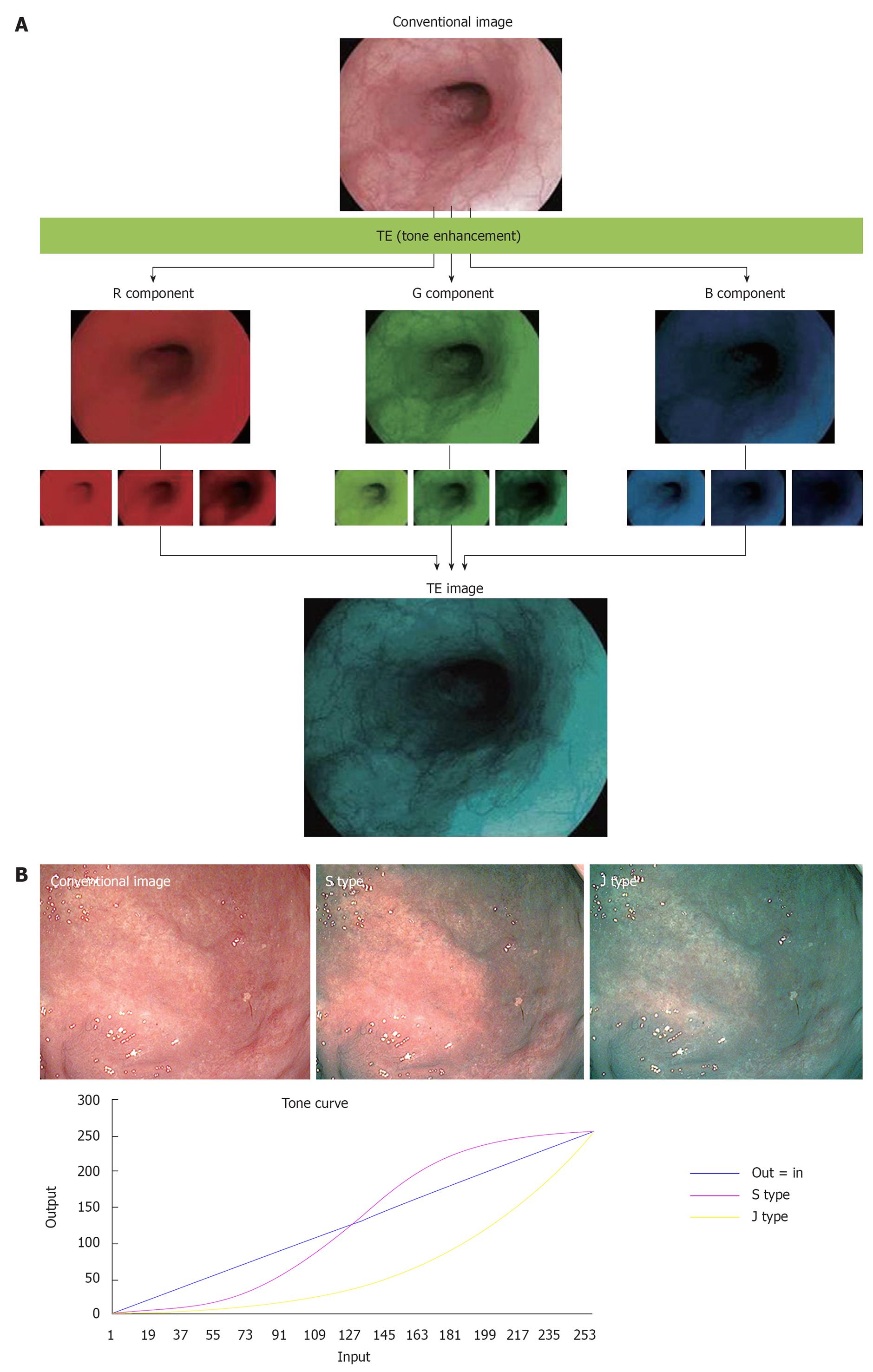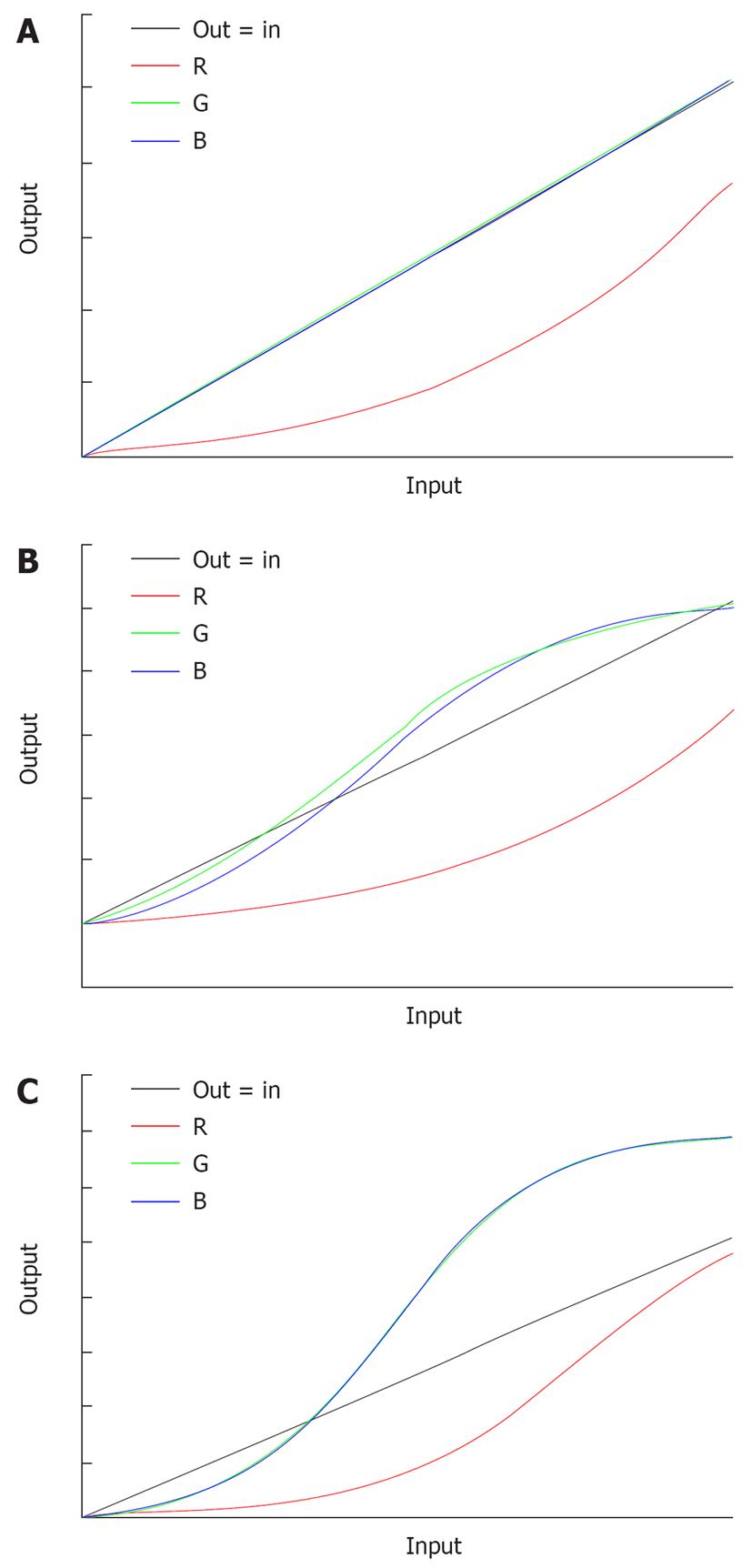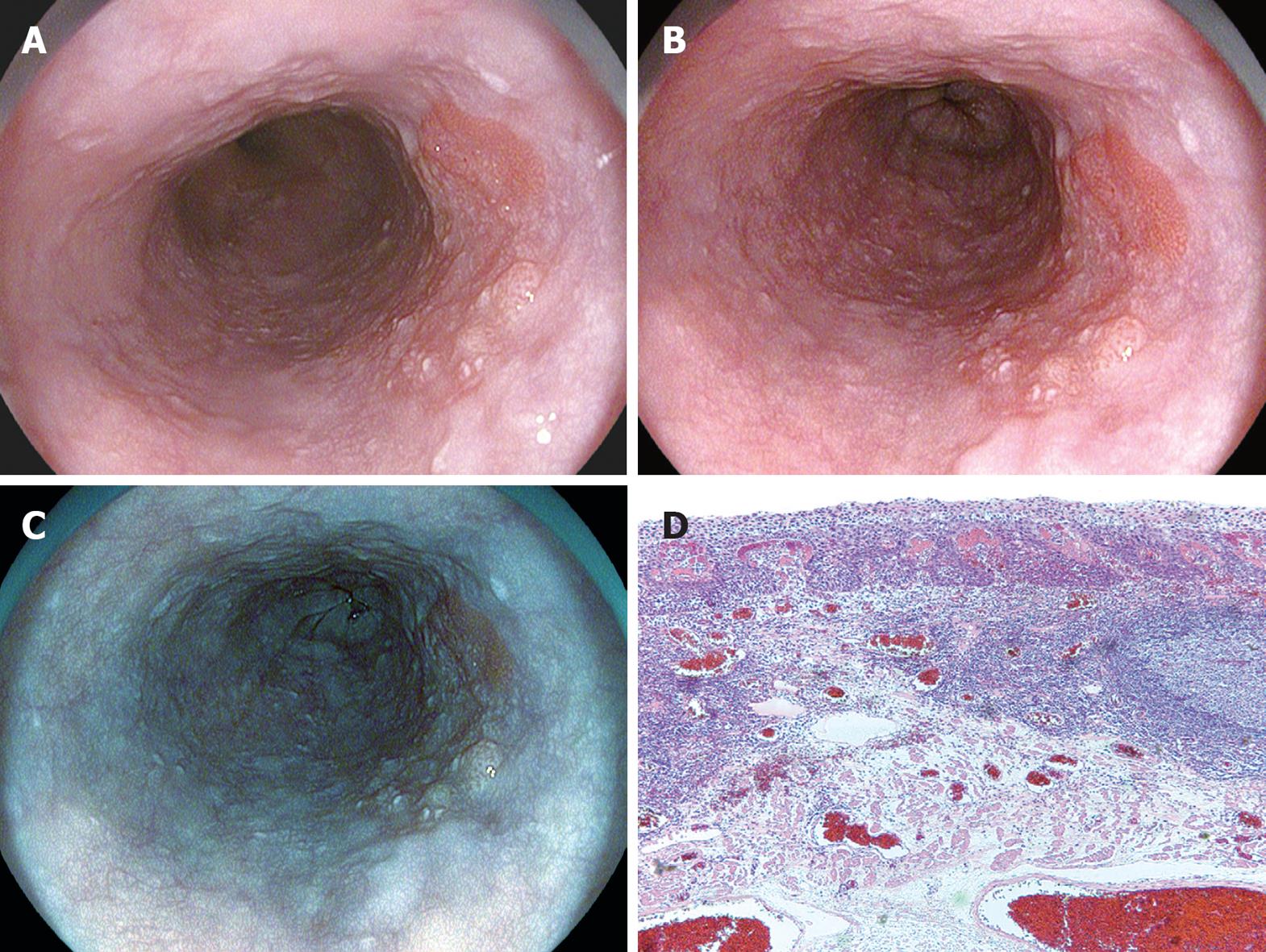Copyright
©2010 Baishideng.
World J Gastroenterol. Mar 7, 2010; 16(9): 1043-1049
Published online Mar 7, 2010. doi: 10.3748/wjg.v16.i9.1043
Published online Mar 7, 2010. doi: 10.3748/wjg.v16.i9.1043
Figure 1 Principle of surface enhancement (SE).
A: Enhancement of the edge; B: Enhancement of the minute structure.
Figure 2 Images using SE and contrast enhancement (CE).
A: Conventional image; B: SE image; C: CE image; D: SE + CE image.
Figure 3 Principle of CE.
A: Enhancement of the low luminance area; B: Relative enhancement of the B component.
Figure 4 Principle of tone enhancement (A) and tone curve (B).
TE: Tone enhancement.
Figure 5 Tone curve.
A: TE-e; B:TE-g; C:TE-c.
Figure 6 Case 1 (esophageal cancer).
A: Conventional image: A slightly reddish irregular area was recognized in the right wall of the thoracic middle esophagus; B: SE + CE image: As compared with conventional image, the lesion could be recognized as an irregular area with clear boundaries; C and D: TE-e image: As compared with conventional image and SE + CE image, the demarcation line of the lesion could be recognized more clearly as a reddish irregular area. This was pathologically diagnosed as carcinoma in situ that corresponded to this region.
Figure 7 Case 2 (gastric cancer).
A: Conventional image: A red depressed lesions was visible on the anterior wall of the lower gastric body, but it was difficult to identify the demarcation of it; B: SE + CE image: The differences of the mucosal structure and color of the lesion could be observed; C, D: TE image: The demarcation of the lesion could be identified more clearly, observing changes in mucosal structure and color tone; E: Pathological diagnosis indicated a well to moderately differentiated adenocarcinoma, localized in the mucosal layer.
- Citation: Kodashima S, Fujishiro M. Novel image-enhanced endoscopy with i-scan technology. World J Gastroenterol 2010; 16(9): 1043-1049
- URL: https://www.wjgnet.com/1007-9327/full/v16/i9/1043.htm
- DOI: https://dx.doi.org/10.3748/wjg.v16.i9.1043










